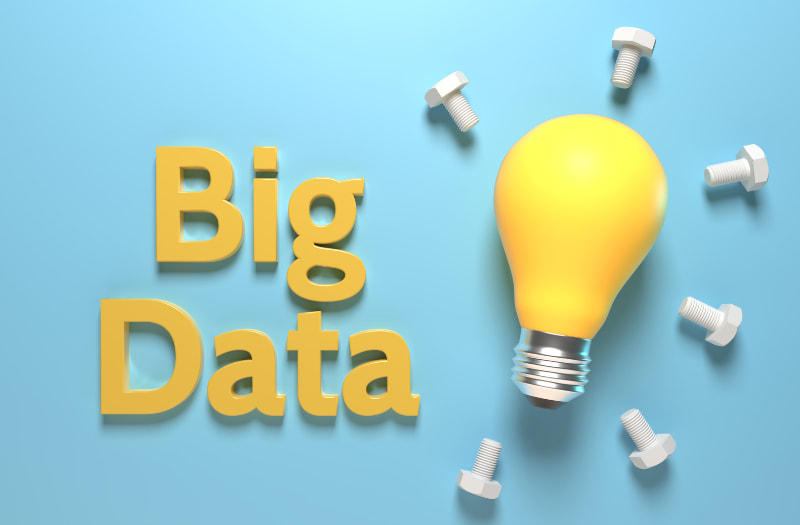Big Data Analytics in the Public Sector | Uses and Challenges
 Chloe Martin
·
6 minute read
Chloe Martin
·
6 minute read
We now generate and collect more data than ever before.
This means we not only need a smooth process to collect it, but we also need to know how to analyse and use the findings to make improvements.
With the large amounts of diverse data the government and public sector organisations collect, there’s a real opportunity to understand the needs of service users, combat risks and improve the day-to-day operations of services.
In this post, we’ll cover what big data analytics is, how it is used by key organisations, the benefits, challenges and how the public sector can overcome them.
Jump to:
- What is Big Data Analytics?
- What is the Role of Big Data Analytics in the Public Sector?
- 5 Benefits of Using Big Data Analytics
- 5 Challenges of Using Big Data Analytics
- How to Overcome the Challenges of Using Big Data Analytics
What is Big Data Analytics?
Big data analytics focuses on collecting unstructured data to understand users, solve organisational problems or make strategic decisions to improve services and identify inefficient processes.
Big data requires sophisticated techniques to analyse the data. The volume of information is so varied and large that it would take more than a computer to store, validate and analyse.
The five key aspects of big data analytics are:
- Volume – the sheer amount of data
- Variety – number of sources of data
- Velocity – speed of data generation
- Value – how much you can rely on the data
- Veracity – variability and inconsistency
What is the Role of Big Data Analytics in Government and the Public Sector?
In government and the public sector, big data analytics plays a vital role in aiding a greater understanding of service users, where improvements need to be made and how to make more accurate decisions.
Depending on the organisation and the insights they’re after, there are many types of data that are collected and used for several reasons. Here are a few examples of the data collected in the public sector that can be used in big data analytics:
-
Public health records
-
Service user databases
-
Financial records
-
Tax information
Let’s dive into how specific public sector organisations may use big data analytics:
Government
From policymaking to resource allocation, the government look at large data sets to understand how to improve public services on a wider scale, promote evidence-based decision-making and develop law enforcement.
Healthcare
Healthcare services such as the NHS are likely to be one of the biggest users of big data analytics in the public sector. This is often to:
- Improve patient outcomes
- Use predictive analysis to identify potential outbreaks of disease
- Optimise treatment plans based on success or effectiveness rates
- Develop personalised medicine
- Monitor population health patterns
- Improve operational efficiency and waiting times
- Identify new drug development
For an insight into how much data the NHS collects: In 2022 across the UK there were 300 million appointments made for primary care across roughly 6,500 GP practices. Each one of these appointments is captured in an Electric Health Record (EHR) which each person registered with the NHS has.
These numbers do not include secondary and specialist care provided by NHS trusts.
Police Forces
All police forces have access to a large number of databases and tools to make use of that data. From CCTV and ANPR footage to social media intelligence, law enforcement can use big data analytics to:
- Identify criminals
- Predict and monitor crime locations (predictive mapping)
- Supplying evidence for a case with body cameras
- Identify risks associated with specific individuals
- Detecting fraud or other forms of misuse
There is a lack of research on the potential of big data analytics in UK policing because of budget cuts and ethical concerns. But, with a large amount of data collected, this is likely to change in the future. When more budget and resources become available, big data analytics may become a priority.
Councils
Local councils collect a variety of data. From name changes, where you move to, who you marry and when you change jobs. This can be useful when developing new schemes and investing in user services. However, according to Experian’s research from The Role of Data Quality in the UK Public Sector, 27% of councils felt their data was a strength.
This is ultimately due to a lack of organised data, understanding of how to use it effectively and the sheer amount of data entered by individuals as they come forward to access services or grants online.
5 Benefits of Using Big Data Analytics in the Public Sector
1. Improve operational efficiency
As interactions between public sector organisations and their users increase, using big data tools can improve operational efficiency through storing and analysing user feedback, a greater understanding of users and their needs.
For example, using big data analytics can reduce the expense of healthcare by analysing thousands of electronic health records to identify trends and patient patterns which can cut unneeded hospital stays. It can also help doctors to provide more effective patient treatment and therapy through predictive analysis.
2. Strengthen your strategy
Whether it’s forecasting trends, demands or political changes, big data analytics can be used to make more informed and evidence-based decisions. Analysing large amounts of data can reveal patterns that can guide policy creation, improved efficiency and cost savings in the long run.
3. Promote smart decision making
Sometimes public sector organisations must make decisions quickly, especially if they need to respond with speed to a situation. By analysing large volumes of data, organisations can make faster and smarter decisions that will have stronger outcomes.
Use case example: Police forces can use big data analytics to decide whether to place more law enforcement officers in a specific area by analysing various factors from need, level of crime in the area, population and risks associated with specific individuals in that area.
4. Streamline resource management
Big data analytics can be used to identify future service needs by analysing specific data that informs us on demand levels for services. This way, public sector organisations can optimise resources and prioritise areas that require more attention. This results in better-targeted investments and stronger service delivery.
5. Risk identification
Identifying risks is important for any public sector organisation. The amount of data available allows organisations to draw conclusions, identify and reduce risks quickly with predictive analysis and optimise complex decisions to avoid greater threats.
5 Challenges of Using Big Data Analytics in the Public Sector
1. Effective nationwide data sharing and collaboration
One of the biggest challenges of big data analytics in the public sector is how data is shared and used collaboratively. Because many different departments may need the data for various reasons, developing real-time data-sharing capabilities allows organisations to respond quickly, make coordinated decisions and collaborate for the benefit of the nation.
2. Compliance issues
As the amount of data we create continues to grow, more data regulations are needed to ensure it’s used effectively and ethically. One way to overcome this challenge is to run regular compliance audits to assess adherence to regulatory requirements and identify areas for improvement.
3. Too many systems create poor data quality
Moving away from legacy systems that have been in place for many years is a monumental task that can take a long time. With too many systems, data can be duplicated, and inconsistencies can occur. 20% of councils say they uncovered “major shortcomings in their data” which can occur when councils rely on organisations and individuals to fill in data which can result in errors and not up-to-date data – for example when individuals move house, change names etc.
A wide and fragmented data landscape creates a higher chance of low data quality. This is unhelpful for identifying patterns and it creates a risk of privacy and accuracy for patients wanting access to their own data.
4. Security risks
Public sector organisations handle sensitive user information that’s crucial to protect. Another challenge of using big data analytics in the public sector is implementing data protection measures across all organisations and departments. This ensures security risks are kept at a minimum and data sharing and collaboration are seamless.
One way to minimise security risks with big data analytics is through training and awareness. Providing training on data handling, privacy and security ensures staff understand the importance of compliance to protect individual identities and organisations.
5. Accountability
Transparency in big data analytics is crucial. Every organisation must be able to explain how data is analysed to ensure that decisions are accountable and clear to stakeholders and service users. Transparency and accountability come into play when data is shared across multiple organisations to explain what the data is being used for, how long it’s needed and where the data may end up if it’s shared again.
How Can the Public Sector Overcome the Challenges of Using Big Data Analytics?
Using big data in the public sector still has a long way to go, but specific sectors are striving for improvements. For example, the data strategy for health and social care provides an action plan "to address the current cultural, behavioural and structural barriers in the system, with the ultimate goal of having a health and care system that is underpinned by high-quality and readily available data."
One big part of overcoming challenges to using big data analytics is understanding how to use it and make use of its full potential. Our Masterclass on Understanding Big Data Analytics led by Data Science expert, Robert Grant, can help you understand how big data analytics can benefit your organisation and service users. Throughout the morning, you'll:
- Develop a comprehensive understanding of big data analytics
- Explore the opportunities and responsibilities of using big data analytics in your organisation
- Identify where big data can help you achieve organisational objectives
Unlock the Value of Big Data Analytics for Your Organisation
Utilise the full potential of big data analytics and hear advice from our expert trainer in our Masterclass: Understanding Big Data Analytics.
2+ years in SEO and content marketing. Striving to help public sector professionals develop their skills and learn something new through high-quality content.





-Dec-20-2023-10-26-30-7805-AM.jpg)

